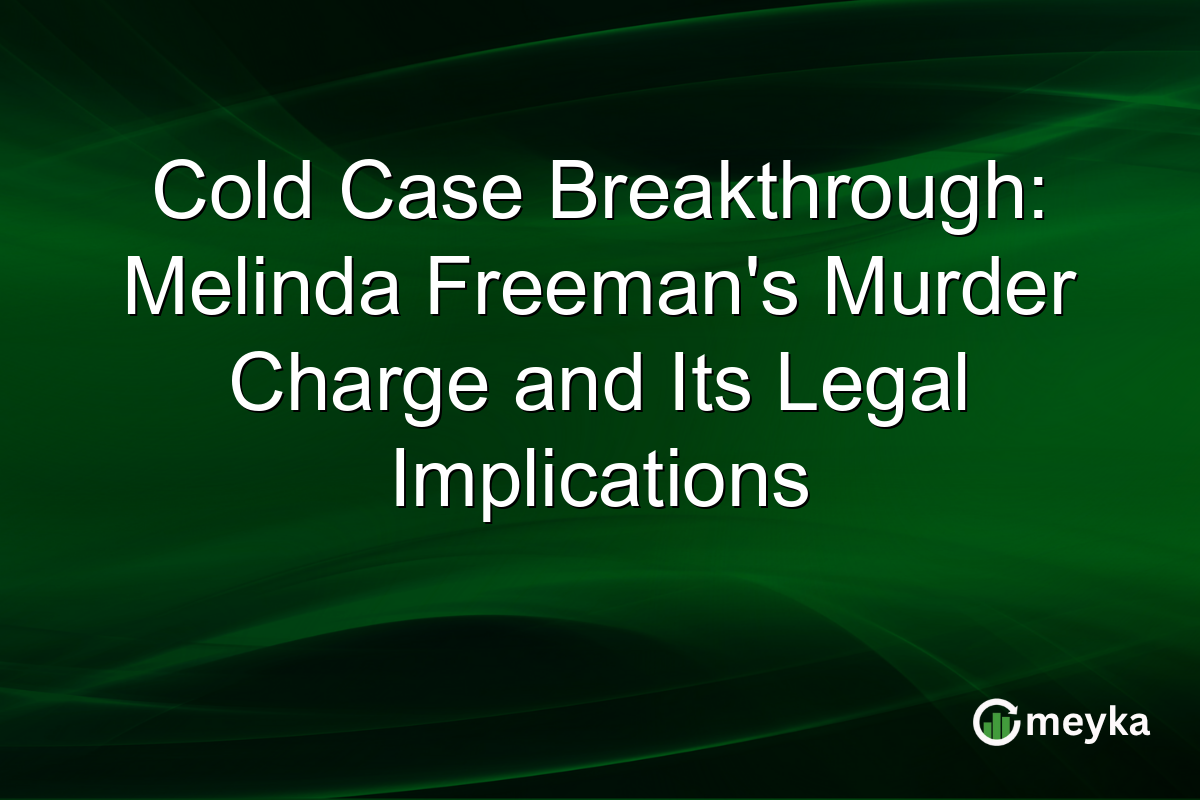Cold Case Breakthrough: Melinda Freeman’s Murder Charge and Its Legal Implications
The arrest of Craig Freeman for the murder of his wife, Melinda Freeman, after more than 30 years, marks a significant breakthrough in cold case investigations. The case highlights the vital role of persistent legal efforts and community involvement in justice systems. With new advancements in forensic technology and renewed focus, cold case resolutions like this one provide crucial lessons for law enforcement and the legal community.
Melinda Freeman Murder Case Revisited
Melinda Freeman’s murder in 1995 remained unsolved for decades, puzzling both investigators and the Australian public. The recent arrest of her husband, Craig Freeman, sheds new light on the case and emphasizes the importance of unwavering police work. Victoria Police’s determination to bring closure to cold cases has been instrumental in this breakthrough. Their efforts underscore how persistent investigation tactics can lead to significant legal developments even after many years. Read more on ABC News.
The Role of Forensic Advancements
Advancements in forensic science, such as DNA analysis and enhanced data sharing techniques, have played a pivotal role in resolving the Melinda Freeman murder case. These technologies have helped bridge the gaps that previously stalled progress. By re-examining evidence with state-of-the-art tools, law enforcement agencies have a greater ability to solve cold cases that once seemed insurmountable. This technological evolution continues to transform how legal systems handle long-standing investigations.
Community’s Impact on Cold Case Resolution
Community involvement has been a cornerstone in the resolution of cold cases like Melinda Freeman’s. Public tips and heightened media awareness contribute significantly to ongoing investigations. In Melinda’s case, renewed interest and community collaboration pushed authorities to reinvestigate with fresh perspectives. This engagement not only aids in solving crimes but also restores community trust in law enforcement’s commitment to justice. Further details on Daily Mail.
Legal Implications and Future Trends
The arrest of Craig Freeman sets a precedent for how long-dormant cases can be reinvigorated. It challenges legal frameworks to adapt and accommodate evolving investigative techniques. For the judiciary, this case exemplifies the need for flexibility in allowing new evidence to be considered after significant delays. As cold case resolutions increase, courts will likely face the task of balancing old facts with new insights, posing both challenges and opportunities for legal reform.
Final Thoughts
The resolution of the Melinda Freeman murder case highlights how a blend of technology, community involvement, and relentless investigation can alter the landscape of legal processes surrounding cold cases. As old mysteries unravel, they pave the way for new legal considerations. Law enforcement agencies and the judicial system must continue to adapt to these evolving demands, ensuring that justice is timely and effective. The successful approach to the Melinda Freeman case may serve as a template for handling future unresolved crimes, ultimately enhancing public trust in the pursuit of justice.
FAQs
The breakthrough was primarily due to advancements in forensic technologies and persistent investigative efforts by Victoria Police. New DNA analysis and increased community cooperation were key factors.
Resolution brings closure to families and boosts community trust in the justice system. It reassures the public that law enforcement agencies remain committed to solving crimes, regardless of how much time has passed.
Legal systems must navigate how to incorporate new evidence into old cases, maintain fairness in trials, and handle potential limitations of statutes in place. Balancing these challenges while adapting to technological advancements is essential.
Disclaimer:
The content shared by Meyka AI PTY LTD is solely for research and informational purposes. Meyka is not a financial advisory service, and the information provided should not be considered investment or trading advice.






